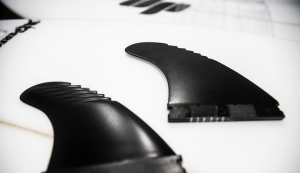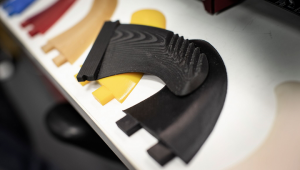Renishaw launches InfiniAM Spectral additive manufacturing monitoring software
3D Printing Low Poly Dinosaurs AND THEN MELTING THINGS
Laser Tag With Raspberry Pi @Raspberry_Pi #PiDay #RaspberryPi

by terrang via Instructables
This Instructable will walk through the process for creating an Infrared Laser Tag game using a base server computer and a Raspberry Pi zero for each player. The project relies heavily on a Wifi connection to communicate with the server which makes the Pi a great candidate.
The server used in this project was an old desktop computer with Linux. The computer does not need to be anything special, and could probably even be run from a Raspberry Pi 3. The server and each of the pi zero’s must be connected to the same network during game play.

In this project, we ended up taking the IR LED Transmitter from an old set of laser tag guns that had a black cone around the transmitter to help narrow the shot of each gun. However, any general transmitter should work.
In addition to the items listed above, the laser guns themselves were 3D printed. This project would therefore also require access to a 3D printer and filament.
See full project breakdown here!
3D Printed Fins Help Surfers Catch the Perfect Wave…and May Signal a Sports Industry Revolution
 If you like 3D printing just as much as you enjoy riding those gnarly waves, you may remember when a research team from the University of Wollongong (UOW) in Australia started 3D printing surfboard fins specifically tailored to the needs of the individual surfer two years ago. This research has continued, and a multidisciplinary team of UOW students and academics from the university’s Australian National Fabrication Facility (ANFF), along with several surfers, recently took a trip to hang ten at the remote Mentawai Islands in Indonesia, and test out new shapes of surfboard fins, which were designed and 3D printed at UOW.
If you like 3D printing just as much as you enjoy riding those gnarly waves, you may remember when a research team from the University of Wollongong (UOW) in Australia started 3D printing surfboard fins specifically tailored to the needs of the individual surfer two years ago. This research has continued, and a multidisciplinary team of UOW students and academics from the university’s Australian National Fabrication Facility (ANFF), along with several surfers, recently took a trip to hang ten at the remote Mentawai Islands in Indonesia, and test out new shapes of surfboard fins, which were designed and 3D printed at UOW.
The project is part of UOW’s Global Challenges Program, with an initial goal of testing out several of these new 3D printed fin shapes and comparing them against conventional fins. But the researchers also hope to determine the possibility of developing a new niche manufacturing industry out of 3D printed surfboard fins.
“There is a lot to a simple surfboard fin, you have to consider the fin base, depth, rake (or sweep), foil, cant, toe and flex,” said Professor Marc in het Panhuis from the university’s School of Chemistry, who worked on the last 3D printed surfboard fin project. “Not to forget, the number of fins and their positioning on a surfboard.
“There is no such thing as a simple surfboard fin. The team has looked at things different materials that can make the fin stronger, lighter and its ability to flex.”
 According to Professor in het Panhuis, ocean swell and a good surfboard, fitted with the proper fins, are both equally important to surfers. While these 3D printed fins may look like commercially available ones, Professor in het Panhuis said that “the proof is in the ride.”
According to Professor in het Panhuis, ocean swell and a good surfboard, fitted with the proper fins, are both equally important to surfers. While these 3D printed fins may look like commercially available ones, Professor in het Panhuis said that “the proof is in the ride.”
Dr. Stephen Beirne with the university’s ANFF said that this is the perfect project to conduct trials on 3D printing and rapid prototyping.
“3D printing enables us to print virtually anything we can imagine and that includes surfboard fins. Our team started out creating CAD-generated fin designs on a computer, then we took those designs and used computational fluid dynamics to see how the fin was likely to perform in the water,” explained Dr. Beirne. “The last part of the process was to select the most appropriate materials to print the prototype.”
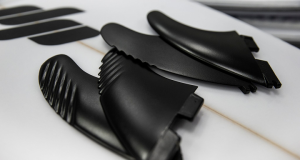 3D printing is often used today to fabricate equipment for real-life use in the sports and leisure industry, from protective gear – like soccer shin guards, helmets, and mouthguards – to apparel ranging from specialized footwear, eyewear, and racing gloves, and equipment such as improved snowboards, luge sleds, and even surfboards. By using this technology to create usable parts, the whole sports industry could see a 3D printed revolution in terms of customized products.
3D printing is often used today to fabricate equipment for real-life use in the sports and leisure industry, from protective gear – like soccer shin guards, helmets, and mouthguards – to apparel ranging from specialized footwear, eyewear, and racing gloves, and equipment such as improved snowboards, luge sleds, and even surfboards. By using this technology to create usable parts, the whole sports industry could see a 3D printed revolution in terms of customized products.
The UOW researchers took their time coming up with designs for the 3D printed fins, and after a long search to find the most consistent ocean waves in which to test the fins in real-world conditions, they chose the island chain off the western coast of Sumatra, as it provides both dependable waves and a variety of surf breaks, including the left-hand-breaking Macaronis wave the team used.
“Macaronis is a unique surfing spot because the waves always break on a reef in the same spot,” explained Professor in het Panhuis. “The waves also roll over a long distance and surfers can get a maximum of turns, which is perfect for collecting surfboard fin data.”
The surfers were tasked with catching a variety of waves, and performing as many turns as they could manage on each, with multiple different surfboard fins. Surfboard shaper Dylan Perese of DP Surfboards, who participated in the testing and data collection, also produced standardized surfboards for the project, so everyone had the same base.
Professor in het Panhuis then added embedded sensors and GPS tracking devices to the surfboards to gather performance data on the fins. He explained:
“The devices tracked everything from wave count, speed, number of turns to the amount of rail engaged during turning (to name but a few of the parameters). The surfers also filled out a fin performance rating scale immediately after they completed riding each set of fins. The information is then used to compare the different sets of fins.”
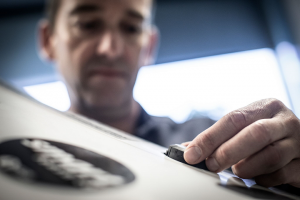 Professor Julie Steele, the Director of UOW’s Biomechanics Research Laboratory, has nearly four decades of experience running human trials, and collected the data during the trials, while also taking pains to ensure that the surfers were not biased toward any particular fin designs.
Professor Julie Steele, the Director of UOW’s Biomechanics Research Laboratory, has nearly four decades of experience running human trials, and collected the data during the trials, while also taking pains to ensure that the surfers were not biased toward any particular fin designs.
The surfers were tracked on over 450 waves, performing more than 1,700 turns, in multiple weather conditions, on three different 3D printed fin designs. The results, which should be published soon, were then compared against fins sold by two mainstream fin producers, and there was a clear winner.
“Preliminary analysis of the fin performance rating data has revealed that the surfers, on average, have rated one of the 3D printed fins as feeling the best to surf on. We were surprised that there was such a strong preference for this one fin, given the six surfers all had very different surfing styles,” said Professor Steele.
The 3D printed ‘Crinkle Cut’ fin has a series of grooves on one side, in order to increase the lift to drag ratio and propel surfers along the waves.
“The reason this fin shape works so well is because the contours improve the way the water flows past it,” Professor in het Panhuis explained. “These contours ultimately give the surfer more speed. The fins also seemed to offer plenty of drive and projection out of turns.”
So whether you’re hoping to catch the perfect wave, hit the track, or try for an Olympic medal, 3D printing could help you get to the finish line.
Discuss of this story and other 3D printing topics at 3DPrintBoard.com, or share your thoughts below.
[Images provided by UOW]
Henry Schein and KKR & Co.’s Internet Brands Joint Venture Potential 3D Printing Impact
Henry Schein is one of the world’s largest distributors of healthcare products and services. In 2017 alone, the healthcare giant made $12.5 billion in revenue. As of July 2018, Henry Schein has partnered with KKR & Co.’s Internet Brands to create Henry Schein ONE, a management system that ties practice management, marketing, and patient communications into one neat package. Specifically, Henry Schein Practice Solutions products–such as Dentrix and Easy Dental–are being combined with Internet Brands’ solutions–such as DemandForce, Officite, and DentalPlans.com. Its creators believe that Henry Schein ONE will have a tremendous impact on dental practices’ patient care quality, experience, organization, and efficiency.
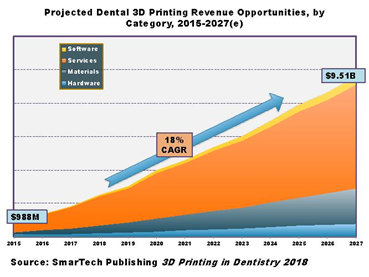 There are hundreds of dental technology platforms that have allowed practices to transition from paper to digital devices. These platforms have digitized dental practice aspects such as patient charting, appointment scheduling, examinations, and more. Consequently, dental offices have become more efficient and more sustainable. One dental office may have as many as five different platforms in use including a scheduling system, an examination system, and a billing system. However, many of these platforms are highly individualized, and as a result it is difficult to have them communicate with one another. When the number of systems in one office becomes too much, it may even slow down the workflow. We believe that this new joint venture will help accelerate the already predicted increase in dental 3D printing. Moreover, this dental 3D printing technology growth will be augmented by R&D tax credits.
There are hundreds of dental technology platforms that have allowed practices to transition from paper to digital devices. These platforms have digitized dental practice aspects such as patient charting, appointment scheduling, examinations, and more. Consequently, dental offices have become more efficient and more sustainable. One dental office may have as many as five different platforms in use including a scheduling system, an examination system, and a billing system. However, many of these platforms are highly individualized, and as a result it is difficult to have them communicate with one another. When the number of systems in one office becomes too much, it may even slow down the workflow. We believe that this new joint venture will help accelerate the already predicted increase in dental 3D printing. Moreover, this dental 3D printing technology growth will be augmented by R&D tax credits.
The Research & Development Tax Credit
Enacted in 1981, the now permanent Federal Research and Development (R&D) Tax Credit allows a credit that typically ranges from 4%-7% of eligible spending for new and improved products and processes. Qualified research must meet the following four criteria:
- Must be technological in nature
- Must be a component of the taxpayer’s business
- Must represent R&D in the experimental sense and generally includes all such costs related to the development or improvement of a product or process
- Must eliminate uncertainty through a process of experimentation that considers one or more alternatives
Eligible costs include US employee wages, cost of supplies consumed in the R&D process, cost of pre-production testing, US contract research expenses, and certain costs associated with developing a patent.
On December 18, 2015, President Obama signed the PATH Act, making the R&D Tax Credit permanent. Beginning in 2016, the R&D credit can be used to offset Alternative Minimum tax for companies with revenue below $50MM and for the first time, startup businesses can obtain up to $250,000 per year in payroll taxes and cash rebates.
The Joint Venture Dental Components
 James Harding, Chief Executive Officer of Henry Schein ONE and former Chief Technology Officer of Henry Schein, stated that the company’s goal was to deliver technology innovation to automate more tasks and simplify the digital workflow under one integrated system. By having one system in which the various platforms can effectively communicate with one another, the administrative work is lessened and dental practitioners can lend more time to patient care and dental technology.
James Harding, Chief Executive Officer of Henry Schein ONE and former Chief Technology Officer of Henry Schein, stated that the company’s goal was to deliver technology innovation to automate more tasks and simplify the digital workflow under one integrated system. By having one system in which the various platforms can effectively communicate with one another, the administrative work is lessened and dental practitioners can lend more time to patient care and dental technology.
Potential 3D Printing Impact
We believe that this powerhouse joint venture could help accelerate 3D printing integration in dental offices by eliminating time consuming administration tasks. Dentists and dental lab technicians will be able to focus more on dental technology. The technology for 3D printing in the dental industry has already proven to be ground-breaking and is continuously improving. Being partnered with leading Internet dental brands is going to really enable companies to get the message out about new dental technologies.
In SmarTech Publishing’s analysis report on 3D printing in the dental industry, it is predicted that by 2027 dental 3D printing revenue will reach $9.5 billion. The majority of that revenue was credited to 3D printing services in the dental industry. With the rise of 3D printed clear aligners, SmarTech Publishing also predicted that an estimated $22.8 million in market value would be credited to clear aligner forming tools alone. Clear aligners are especially benefiting from 3D printing as one of the first highly customized products to be made en masse. What used to be a very slow and gradual process of straightening teeth is drastically improving with 3D printing and better technology.
Conclusion
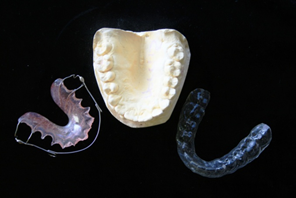 With the joint venture of two major companies and contributors to the dental industry, practices nationwide are sure to be transformed. Dental offices will have better administration and overall workflow. Consequently, dental offices and labs can dedicate more time and money to advancing their technology such as dental 3D printing.
With the joint venture of two major companies and contributors to the dental industry, practices nationwide are sure to be transformed. Dental offices will have better administration and overall workflow. Consequently, dental offices and labs can dedicate more time and money to advancing their technology such as dental 3D printing.
Discuss this and other 3D printing topics at 3DPrintBoard.com or share your thoughts below.
Charles Goulding and Rafaella July discuss the Henry Schein and KKR & Co. joint venture.
Singapore University Announces 3D Printing Construction Program
The Centre for Additive Manufacturing (AM.NUS), a branch of the National University of Singapore, has announced a new 3D printing construction program. The purpose of the program is to accelerate the adoption of construction printing processes in the wider industry. As a result, they hope to lower costs and implement better, eco-friendly methods across the world. […]
The post Singapore University Announces 3D Printing Construction Program appeared first on 3D Printing.
Branch Technology Prints World’s Largest 3D Printed Structure
It’s a sign of pride in the industry that 3D printed designs now adorn parks and museums across the world. So perhaps its time that companies would start breaking records in terms of scale and size by now. One such firm, Branch Technology, has done just that by printing the world’s largest 3D printed structure. […]
The post Branch Technology Prints World’s Largest 3D Printed Structure appeared first on 3D Printing.
Lockheed Martin 3D printed antenna database funded in NextFlex $12 millon offering
Moai Tissue dispenser #3DPrinting #3DThursday
Crooked Noozle shared this project on Thingiverse!
Moai 3D-Scan as a tissue dispenser.
How I Designed This
My first 3D scan with Kinect 2 and KScan3D.
Optimized with Meshmixer and Tinkercad.
The learning curve is still steep …

